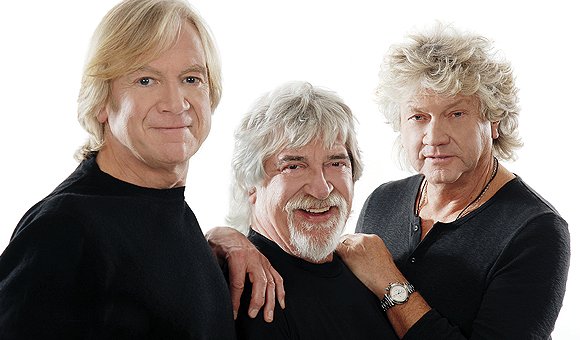Moody Blues keep the gentle, hopeful spirit alive Long distance voyagers
Share
by Chris Parker, CharlestonCityPaper.com
When Moody Blues singer/bassist John Lodge first saw the movie Rock Around the Clock as a 10-year old, little did he realize it'd be a metaphor for his life. He's chased those spinning clock arms for 46 years now, as his band's heady, atmospheric elegance and soaring harmonies came to define progressive/art rock.
Like many of their '60s British rock peers, the Moody Blues grew up on American music. There was no indigenous British "rock" music to speak of, which pushed them to create something new and uniquely their own, rather than compete with the legions of acts aping Buddy Holly and Chuck Berry.
"We were all dressed in suits covering American songs," Lodge recalls. "If you had a concept package with three or four bands in it, they all wanted to do the same songs. We started to realize we weren't really going anywhere. As soon as we got rid of the suits and started writing our own songs, going on stage wearing whatever we wanted that made us feel comfortable, suddenly we found an audience."
The band's debut album, 1965's The Magnificent Moodies, featured multi-instrumentalist Denny Laine (later of Wings) and bassist Clint Warwick. It was more of an R&B/Merseybeat effort with a lot in common with early Beatles material. With the addition of Lodge and singer/guitarist Justin Hayward in 1966, they shed the Beatles suits and embraced a more expansive approach epitomized by their first big hit, "Nights in White Satin," a dramatic, orchestral song replete with with a choir of voices, pensive strings, and a trilling flute.
The band was emboldened by the success of the song and its record, Days of Future Passed, as well as its even headier follow-up, In Search of the Lost Chord, highlighted by the boisterous carpe diem psych-rock of Lodge's "Ride My See-Saw" and trippy folk-inflected Timothy Leary ode "Legend of a Mind." Yet, as bold as these recordings were, for Lodge, confidence only came after touring the States with Canned Heat and Jefferson Airplane.
"The defining moment was getting to America, because suddenly these bands we bought records of ourselves — Jefferson Airplane and Canned Heat — we were performing on the same stage with them and seeing firsthand the difference between making a record and performing live in front of huge crowds," Lodge says. "Going on stage and holding our own, as it were, it was like, 'Yeah, we are doing it right.' We believed in ourselves, we didn't let anyone else influence us from what we see in our own lives."
Encouraged by their early success, they pushed ahead with an epic string of releases. From 1967 to 1972, they recorded seven albums. By the time 1972's Seventh Sojourn hit No. 1, it had joined four earlier Moody Blues albums still lingering on the charts, a nearly unthinkable feat. After a long break, they returned with 1978's Octave, followed by 1981's immensely successful Long Distance Voyager.
"We'd sort of lost contact with each other, because all these other things had taken over," Lodge says. "It was one of those things where we said if we just step away, perhaps all the things that are not important will disappear, and to be honest, that's what happened."
Continue Reading...

